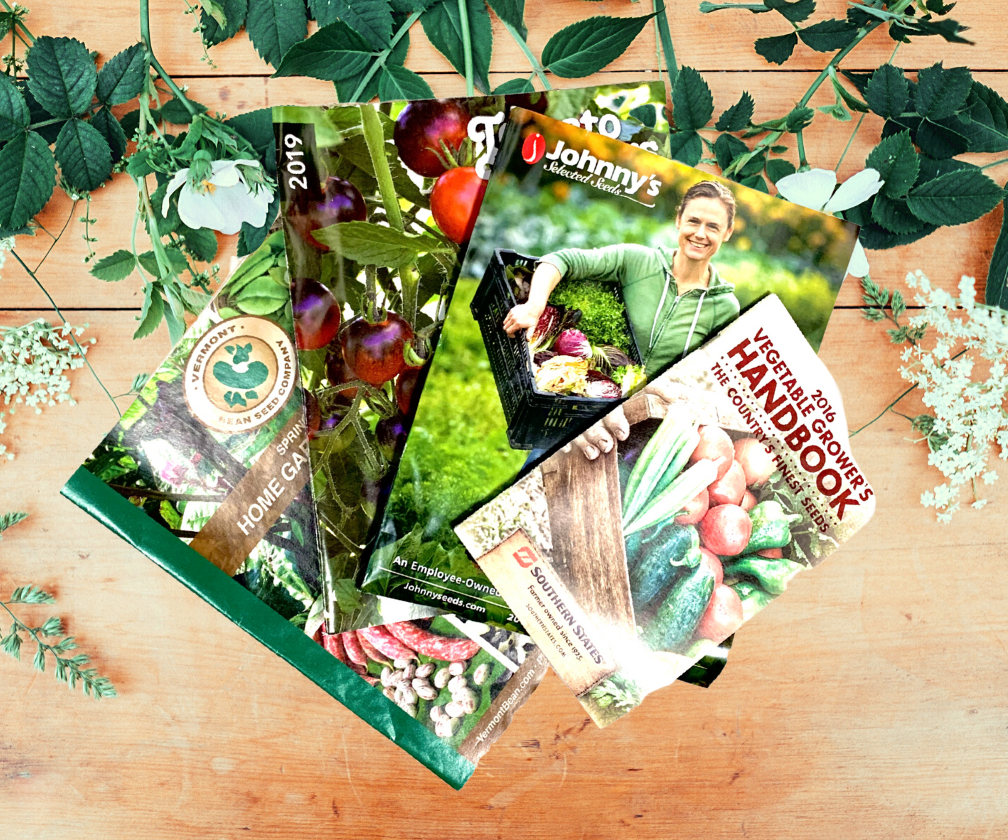Seed Catalogs – Terms to Know Before You Buy: Part 2
go.ncsu.edu/readext?772705
en Español / em Português
El inglés es el idioma de control de esta página. En la medida en que haya algún conflicto entre la traducción al inglés y la traducción, el inglés prevalece.
Al hacer clic en el enlace de traducción se activa un servicio de traducción gratuito para convertir la página al español. Al igual que con cualquier traducción por Internet, la conversión no es sensible al contexto y puede que no traduzca el texto en su significado original. NC State Extension no garantiza la exactitud del texto traducido. Por favor, tenga en cuenta que algunas aplicaciones y/o servicios pueden no funcionar como se espera cuando se traducen.
Português
Inglês é o idioma de controle desta página. Na medida que haja algum conflito entre o texto original em Inglês e a tradução, o Inglês prevalece.
Ao clicar no link de tradução, um serviço gratuito de tradução será ativado para converter a página para o Português. Como em qualquer tradução pela internet, a conversão não é sensivel ao contexto e pode não ocorrer a tradução para o significado orginal. O serviço de Extensão da Carolina do Norte (NC State Extension) não garante a exatidão do texto traduzido. Por favor, observe que algumas funções ou serviços podem não funcionar como esperado após a tradução.
English
English is the controlling language of this page. To the extent there is any conflict between the English text and the translation, English controls.
Clicking on the translation link activates a free translation service to convert the page to Spanish. As with any Internet translation, the conversion is not context-sensitive and may not translate the text to its original meaning. NC State Extension does not guarantee the accuracy of the translated text. Please note that some applications and/or services may not function as expected when translated.
Collapse ▲Last week I started a conversation about terms you should know when making decisions on what you will grow in your garden in the new year. The terms used in seed catalogs can be confusing to those new to gardening and sometimes even to those of us who are more experienced gardeners.
 If you want to grow your crops organically you need to understand terms used that are related to seeds. Organic seeds come from crops that are grown and have been certified through the USDA National Organic Program. For seeds to be “certified organic” that must be grown and produced by farmers who are Certified Organic producers. Untreated seed – are seeds that have not been chemically treated. Treated seeds are those that have been treated most often with a fungicide to prevent damage from diseases that live in the soil. Usually the seeds will be pink or purple in color.
If you want to grow your crops organically you need to understand terms used that are related to seeds. Organic seeds come from crops that are grown and have been certified through the USDA National Organic Program. For seeds to be “certified organic” that must be grown and produced by farmers who are Certified Organic producers. Untreated seed – are seeds that have not been chemically treated. Treated seeds are those that have been treated most often with a fungicide to prevent damage from diseases that live in the soil. Usually the seeds will be pink or purple in color.
When it comes to tomatoes, you need to understand the difference between Determinate and Indeterminate plants. Determinate types grow to a certain size and terminate with a flower cluster. These types will produce almost all of their crop for harvest at one time, so are planted by gardeners who want to preserve the fruit for juice, soups, or salsas. Indeterminate types will grow until killed by a hard frost in the fall. These will produce fruit all season and can grow to be up to 15-20 vines.
Lastly, you need to understand the difference between Disease Resistant and Disease Tolerant. Disease Resistant means the plant has the ability to resist or slow-down the attack from a disease-causing pathogen. Resistance levels can vary from moderate to high. Disease Tolerant refers to the ability of a cultivar to tolerate a disease infection without a significant reduction in growth or yield. Meaning it can still be infected, but it will survive and produce. Like when many of us get a cold, we have the virus, but we are still able to function.
If you have questions about something you don’t understand in a seed or plant catalog, give me a call at 704-283-3729 or email me at dddillio@ncsu.edu.




